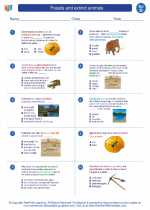Alloys
An alloy is a mixture of two or more elements, at least one of which is a metal. Alloys are created to improve the properties of the base metals, such as strength, hardness, or resistance to corrosion. They are used in a wide range of applications, from construction and manufacturing to jewelry and electronics.
Types of Alloys
There are several types of alloys, including:
- Steel: An alloy of iron and carbon, often with other elements such as manganese, chromium, or nickel. It is used in construction, infrastructure, and manufacturing.
- Brass: A mixture of copper and zinc, often with additional elements such as lead or tin. It is commonly used in musical instruments and plumbing fixtures.
- Bronze: An alloy of copper and tin, with the addition of other elements such as aluminum or phosphorus. It has been used for centuries in sculpture, weaponry, and coinage.
- Aluminum Alloys: Mixtures of aluminum with other elements such as copper, magnesium, or silicon. They are lightweight and used in aircraft, automotive parts, and structural components.
Properties of Alloys
Alloys often exhibit properties that are superior to those of the individual elements they are composed of. These properties can include:
- Strength: Alloys are often stronger than the pure metals they are made from, making them suitable for structural applications.
- Hardness: Many alloys are harder than the base metals, making them ideal for tools and machinery parts.
- Corrosion Resistance: Some alloys are more resistant to corrosion than the individual metals, leading to their use in marine and chemical environments.
- Electrical Conductivity: Certain alloys have improved electrical conductivity compared to their component metals, making them valuable in electrical applications.
Study Guide
To understand alloys better, consider the following study guide:
- Define what an alloy is and give examples of common alloys.
- Explain the reasons for creating alloys and how they improve upon the properties of pure metals.
- Compare and contrast the properties of alloys with those of their component metals.
- Research and present a case study on the use of alloys in a specific industry or application.
- Create a chart or table comparing the properties of different alloys and their uses.
- Discuss the environmental and economic impacts of using alloys compared to pure metals.
By studying these aspects of alloys, you will gain a comprehensive understanding of their importance in various fields and industries.
.◂Science Worksheets and Study Guides Fourth Grade. Fossils and extinct animals
Study Guide Fossils and extinct animals
Fossils and extinct animals  Worksheet/Answer key
Worksheet/Answer key Fossils and extinct animals
Fossils and extinct animals  Worksheet/Answer key
Worksheet/Answer key Fossils and extinct animals
Fossils and extinct animals  Worksheet/Answer key
Worksheet/Answer key Fossils and extinct animals
Fossils and extinct animals  Vocabulary/Answer key
Vocabulary/Answer key Fossils and extinct animals
Fossils and extinct animals  Vocabulary/Answer key
Vocabulary/Answer key Fossils and extinct animals
Fossils and extinct animals  Vocabulary/Answer key
Vocabulary/Answer key Fossils and extinct animals
Fossils and extinct animals  Vocabulary/Answer key
Vocabulary/Answer key Fossils and extinct animals
Fossils and extinct animals 

 Worksheet/Answer key
Worksheet/Answer key
 Worksheet/Answer key
Worksheet/Answer key
 Worksheet/Answer key
Worksheet/Answer key
 Vocabulary/Answer key
Vocabulary/Answer key
 Vocabulary/Answer key
Vocabulary/Answer key
 Vocabulary/Answer key
Vocabulary/Answer key
 Vocabulary/Answer key
Vocabulary/Answer key

The resources above cover the following skills:
Concepts of Life Science (SC1, SC2, SC3)
The student demonstrates an understanding of how science explains changes in life forms over time, including genetics, heredity, the process of natural selection and biological evolution by describing fossil evidence (e.g., casts, track ways, imprints, etc.) of extinct organisms.